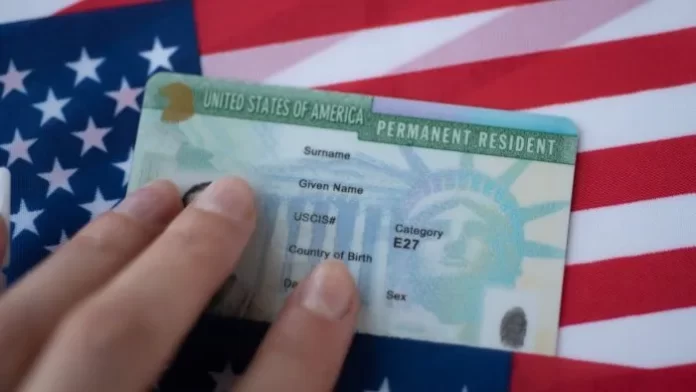“When we do not have a country’s limit on giving an H-1 visa to support our companies, businesses and economy. Why should we have a country cap limit on green card issuance,” Bhutoria an entrepreneur, said at the summit organised by Indian-American Congressman Ro Khanna in his capacity as Co-chair of the Congressional India Caucus.
Indian-American community leader Ajay Jain Bhutoria from Silicon Valley has requested that the seven per cent cap on green cards be removed. He commented on the country-specific limits on green cards, stating that they have created extensive backlogs.
Bhutoria suggested that the country-specific caps should be eliminated as there are no caps on H-1 visas.
A Green Card is a document issued to immigrants to the US as evidence that the bearer has been granted the privilege of residing in the country permanently.
Speaking at the US-India summit held at the US Capitol recently, Bhutoria, an entrepreneur, asked why there was a cap on the Green Card if not on an H-1 visa.
“When we do not have a country’s limit on giving an H-1 visa to support our companies, businesses and economy. Why should we have a country cap limit on green card issuance,” Bhutoria said at the summit organised by Indian-American Congressman Ro Khanna in his capacity as Co-chair of the Congressional India Caucus.
The per-country caps are numerical limits on the issuance of green cards to individuals from certain countries.
Immigration law provides for approximately 140,000 employment-based green cards to be issued each year.
However, only seven per cent of those green cards can go to individuals from a single country annually.
If the number of individuals being sponsored from a single country is greater than seven per cent of the annual available total, a backlog forms and the excess approved petitions are not considered until a visa becomes available and their petition falls within the initial seven per cent per-country cap.
“These country-specific caps have created extensive backlogs, forcing individuals from certain countries-primarily India and China in the employment-based categories- to wait much longer than average to receive their green cards, simply because of their country of origin,” he said.
-
The number of employment-based green cards issued to people from India is roughly around 7,000-8,000 per year due to the seven per cent country cap limit.
-
This 7,000-8,000 includes dependents of primary applicants, so roughly 2,000 Individual H-1B applicants get green cards every year for people of India
“We estimate that more than 880,000 people, including dependent spouses and children, are waiting in the US in employment-based green card backlogs.
“In some categories, applicants who began the process in 2012 are just now able to file formally, meaning they may have waited more than a decade to join their families, even though they were already qualified to do so. These wait times are projected to extend up to 50 years if the law is not changed,” Bhutoria said.
Making a detailed presentation, Bhutoria said that the number of students coming to the US from India on average is around 180-190 thousand per year.
There are 85,000 H-1B work visas issued every year and out of which nearly 60 per cent of H-1B visas are issued via a fair lottery system to tech workers from India, so around 51,000-60,000 H-1B visas.
The number of employment-based green cards issued to people from India is roughly around 7,000-8,000 per year due to the seven per cent country cap limit.
This 7,000-8,000 includes dependents of primary applicants, so roughly 2,000 Individual H-1B applicants get green cards every year for people of India.
Bhutoria said 180-190 thousand students from India come here to study, 50,000-60,000 get H-1B and only roughly 2,000 get green cards every year due to the country’s seven per cent cap limit, the rest applicants continue to live an uncertain life.
“So the request is to remove the seven per cent country limit,” Bhutoria said.
*********************************************************
Readers
These are extraordinary times. All of us have to rely on high-impact, trustworthy journalism. And this is especially true of the Indian Diaspora. Members of the Indian community overseas cannot be fed with inaccurate news.
Pravasi Samwad is a venture that has no shareholders. It is the result of an impassioned initiative of a handful of Indian journalists spread around the world. We have taken the small step forward with the pledge to provide news with accuracy, free from political and commercial influence. Our aim is to keep you, our readers, informed about developments at ‘home’ and across the world that affect you.
Please help us to keep our journalism independent and free.
In these difficult times, to run a news website requires finances. While every contribution, big or small, will makes a difference, we request our readers to put us in touch with advertisers worldwide. It will be a great help.
For more information: pravasisamwad00@gmail.com



